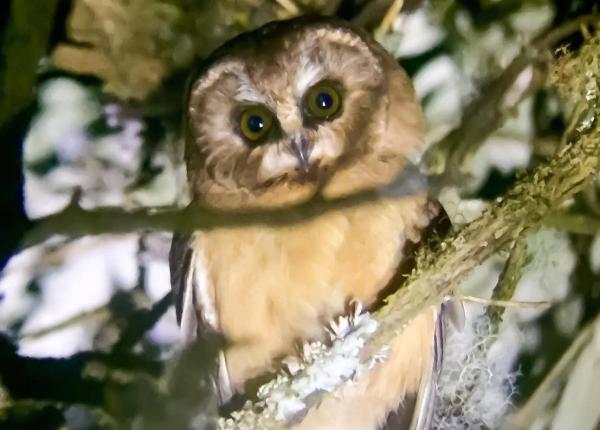How The Peregrine Fund is Helping
Though The Peregrine Fund does not work directly with Unspotted Saw-whet Owls, our efforts in scientific research, habitat conservation, education, and community development help conserve birds of prey around the world. We also supply literature to researchers from our avian research library, which helps scientists around the world gather and share important information on raptor conservation. Our work with the Neotropical Raptor Network helps conserve raptors by fostering collaboration and communication among raptor enthusiasts in the region. And, finally, our support of the Global Raptor Information Network gives raptor researchers tools to more efficiently conduct their own studies while contributing to a global program. It also provides citizen scientists a way to participate in raptor science and conservation.
Where They Live
This owl is a species of the northern Neotropics and it can be found in parts of Mexico, Guatemala, El Salvador, Costa Rica, and Panama. It prefers higher elevation habitats, and can be found at elevations between 1660 and 3475 meters above sea level. It prefers to spend its time in montane and cloud forests.
What They Do
The Unspotted Saw-whet Owl is a nocturnal bird of prey. It is most often seen alone and might only spend time in pairs during breeding season.
Why They Need our Help
In Mexico, this species is listed as endangered, however, globally, it is categorized as a species of Least Concern. However, the lack of information about this species and a fragmented population may threaten the species' overall health in the long term.
What They Eat
Very little information is available on the dietary habits of this lovely owl. However, researchers believe that it is likely to feed on small mammals, such as rodents, and potentially even bats. It might also prey on small birds.
Nests, Eggs, and Young
Just as there is little information on the feeding habits of this owl, researchers also know very little about its breeding biology. However, in general, owls don't build their own nests and it is very probable that Unspotted Saw-whet Owls don't either. They most likely use tree cavities, or holes in trees excavated by woodpeckers.
Unspotted Saw-whet Owl and the World Center for Birds of Prey
Though we are far away from Unspotted Saw-Whet Owl territory, if you are very lucky, you just might spot a wild Northern Saw-whet Owl perched in one of the trees around our World Center for Birds of Prey. Though not seen too often, our staff have observed and photographed at least one individual right next to the parking lot! Additionally, the visitor center at our World Center for Birds of Prey includes owls among its avian ambassadors, including a lovely Eurasian Eagle Owl and Western Screech-Owl. This is a great chance to see owls up close and learn about the wonderful and interesting adaptations they have in order to survive in their respective habitats. There is also a touch table with owl feathers and other natural objects available for exploration.
References:
Angehr, G.R., and R. Dean. 2010. The Birds of Panama: A Field Guide. A Zona Tropical Publication.
BirdLife International. 2016. Aegolius ridgwayi. The IUCN Red List of Threatened Species 2016: e.T22689371A93228935. https://dx.doi.org/10.2305/IUCN.UK.2016-3.RLTS.T22689371A93228935.en. Downloaded on 06 December 2021.
Enríquez, P. L., M. d. C. Arizmendi, C. I. Rodríguez-Flores, and C. A. Soberanes-González (2020). Unspotted Saw-whet Owl (Aegolius ridgwayi), version 1.0. In Birds of the World (T. S. Schulenberg, Editor). Cornell Lab of Ornithology, Ithaca, NY, USA. https://doi.org/10.2173/bow.uswowl1.01









